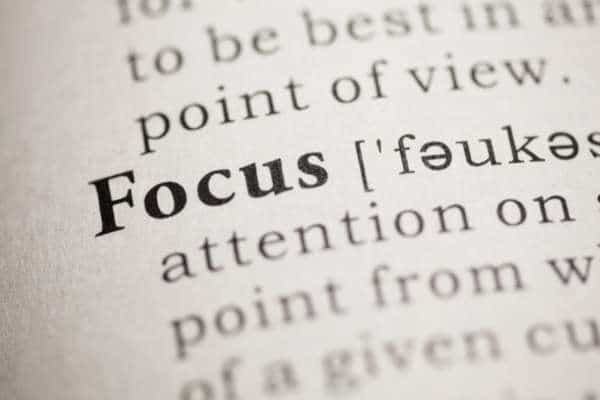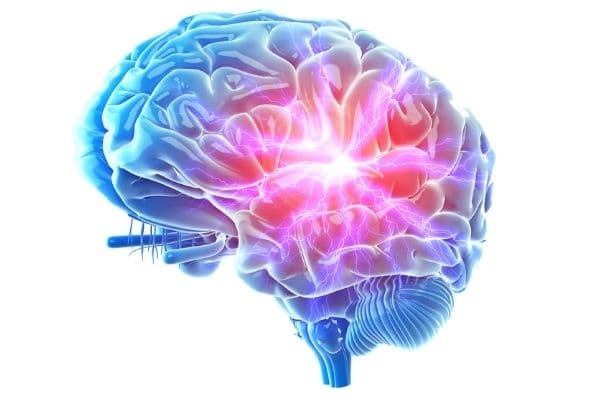Hyperfixation, sometimes called the ‘Superpower’ of ADHD and autism, is the ability to focus intensely on a task while losing track of time.
Researchers have come up with a formal definition for hyperfixation (hyperfocus), basically comparing hyperfixation to being in a ‘flow state’.
I’m thrilled that hyperfixation is finally getting the attention it deserves, but I think it this definition of hyperfixation misses the point. Yet again, the neuroatypical people affected are being ignored.
Here’s the thing: Hyperfixation at its worst is more comparable to an addiction. It is not the state of being in hyperfixation that we need to understand, it is the ON/OFF switch to hyperfixation and how to control it that we need to understand.
To not even consider this issue in a paper that is supposed to lay a foundation for hyperfixation research with a workable definition…. Well, I think that shows a shocking lack of understanding of how hyperfixation actually affects people.
New Hyperfixation Definition
Ok, here are the four criteria of the new hyperfixation definition from this research article (FYI, researchers use the term hyperfocus):
- Hyperfocus is characterized by an intense state of concentration/focus.
- When engaged in hyperfocus, unrelated external stimuli do not appear to be consciously perceived; sometimes reported as a diminished perception of the environment.
- To engage in hyperfocus, the task has to be fun or interesting.
- During a hyperfocus state, task performance improves.

Read on for my thoughts on what it is missing (Hint: it isn’t the task – it is the task switching that is the issue.)
Hyperfixation Meaning
Never heard of hyperfixation or hyperfocusing? Well, there is a serious lack of research on the subject despite it being recognized clinically for years.
“Hyperfocusing is not mentioned in DSM-IV [with respect to ADHD], but it is known from clinical work and can be described as intensive concentration on interesting and non-routine activities accompanied by temporarily diminished perception of the environment.”
Diminished prefrontal oxygenation with normal and above-average verbal fluency performance in adult ADHD

This new definition was based on reviewing the limited descriptions of hyperfocus in psychiatric literature.
In fact, they found only 21 papers that mentioned it! This is despite the fact that hyperfixation is a hotly discussed topic on many ADHD message boards.

People call it the ‘ADHD Superpower’ and credit the ability to hyperfocus for their successes.
Other people describe it as a curse, something they cannot control which can cause their life to derail.
Here is an idea: Maybe actually research hyperfixation/hyperfocus so that we can understand it and control it.
Maybe ask people about their experience with it. Radical idea, I know.
Hyperfixation: Hidden ADHD and Autism DSM criteria
The quote above says that hyperfocusing is not mentioned in the DSM. But the thing is, it actually is, it is just hidden.

Here is the current criteria B3 for diagnosis of ASD (Autism Spectrum Disorder):
Highly restricted, fixated interests that are abnormal in intensity or focus (e.g., strong attachment to or preoccupation with unusual objects, excessively circumscribed or perseverative interests).
B3 Diagnostic Criteria for Autism Spectrum Disorder
Hmmmm. Ok. That sounds like hyperfixation. Not actually all that hidden.
Here is one of the inattentive criteria for ADHD:
Often does not seem to listen when spoken to directly.
1C Diagnostic Criteria (inattention) for Attention Deficit Hyperactivity Disorder
Ok, admittedly this one is less obvious. But consider this, the description of hyperfocus includes ‘When engaged in hyperfocus, unrelated external stimuli do not appear to be consciously perceived; sometimes reported as a diminished perception of the environment.‘
Could it be that our not hearing you is due to our hyperfocusing on an activity or train of thought?
These ‘hidden’ examples of hyperfixation in the DSM are external observations of hyperfixation. Or as one person eloquently put it ‘How we annoy others‘.

We aren’t listening to you. We are ‘abnormally fixated’ on an interest. Right….
What is Hyperfixation – a Strength?
At least this paper describes it as a strength:
“The co-existence of strength and vulnerability encapsulated in these narratives captured essential features of the experience of living with Asperger’s Syndrome—a condition that itself brought valued strengths (the ability to hyperfocus on a topic of interest, strengths in systematic thinking, an occasionally exquisite sensitivity to sensory input) as well as disabilities.”
Making meaningful worlds: role-playing subcultures and the autism spectrum
Because obviously hyperfixation can be a strength. How do you think people get to be experts in a field?
Or, I don’t know, recognized for a lifetime of work with a Nobel Prize? They hyperfocus on a subject, for years.

Hmmm, funny how some people can do that.
Wouldn’t it be nice if we could help more people control and use their ability to hyperfixate.
Hyperfixation vs Hyperfocus
Ok. You might have noticed that I am using the terms hyperfixation and hyperfocus as the same thing.
The term hyperfixation is used in popular culture to describe what this definition describes.
But – Most scientific papers do not use the term hyperfixation in reference to cognitive focus. The term ‘hyperfixation’ is a scientific term to describe how tracers adhere to cells.
When I did I a quick search of ‘hyperfixation’ on PubMed, I found only one paper that mentioned hyperfixation in relation to autism.

So, a caveat: I am assuming that the researchers are using the term hyperfocus to refer to what is called hyperfixation in popular culture. That may not be correct. There may be a distinction between these two terms.
Of course even looking up the term ‘hyperfocus’, there are literally less than a couple dozen papers on ‘hyperfocus’ in relation to neuroatypical brains, which is completely absurd. For comparison, a quick search of PubMed for ‘Inattention ADHD’ gives over 4,500 results.
We are talking about a neuroatypical feature that seems to be able to propel you to success, or ruin your life.

And the DSM main takeaway is that I don’t hear you speaking to me because I am inattentive.
WTF
Define Hyperfixation: The 4 Criteria
Ok, so a couple of researchers realized we might want to start looking into this topic. They point out that ‘Hyperfocus, though ostensibly self-explanatory, is poorly defined within the literature.‘
And that ‘there is no single consensus to what constitutes hyperfocus‘ and they ‘propose an operational definition of hyperfocus for researchers to use moving forward.‘
Great! This seems like an excellent first step to researching hyperfocus/hyperfixation, let’s define it!

They found that there are four general features of hyperfocus that are consistently reported in published research and propose this definition for hyperfocus:
- Hyperfocus is characterized by an intense state of concentration/focus.
- When engaged in hyperfocus, unrelated external stimuli do not appear to be consciously perceived; sometimes reported as a diminished perception of the environment.
- To engage in hyperfocus, the task has to be fun or interesting.
- During a hyperfocus state, task performance improves.
Hyperfixation Definition: Hyperfixation vs “Flow’
The researchers compare hyperfocus (hyperfixation) to ‘Flow’ and concluded it was the same thing. (!!!)

‘Flow’ is a positive mental state of being fully immersed and focused. It is a concept from the field of ‘Positive Psychology,’.
This is the definition they used for ‘Flow’:
The conditions for entering flow include:
- perceived challenges, or opportunities for action, that stretch but do not overmatch existing skills;
- clear proximal goals and immediate feedback about the progress being made.
Under these conditions, experience seamlessly unfolds from moment to moment and one enters a subjective state with the following characteristics:
- intense and focused concentration on the present moment;
- merging of action and awareness;
- loss of reflective self-consciousness (i.e., loss of awareness of oneself as a social actor);
- a sense that one can control one’s actions; that is, a sense that one can in principle deal with the situation because one knows how to respond to whatever happens next;
- distortion of temporal experience (typically a sense that time has passed faster than normal);
- experience of the activity as intrinsically rewarding, such that often the end goal is just an excuse for the process.
And they concluded that hyperfixation/hyperfocus is the same as Flow.
And this is where my jaw dropped. Because I think they are missing an important point regarding ‘The conditions for entering flow’.

The definition of ‘Flow’ on Wikepedia includes this important condition:
- A sense of personal control or agency over the situation or activity
To me this is the main issue with hyperfixation. CONTROL!!! Everyone knows this except apparently these guys writing the definition!!
Yet again, people studying neurodiversity do not get that regulation is the issue!
They write
Although we are mindful that just because two phenomena are descriptively similar, they are not necessarily mechanistically identical, there is no evidence to suggest that either flow or hyperfocus are distinct.
Dudes who don’t get hyperfocus/hyperfixation
Controlling Hyperfixating
They are suggesting that the state of hyperfocus (hyperfixation) and Flow are the same. And maybe being in the state of hyperfixation of Flow is the same thing.
But, while some people describe hyperfixation as their superpower, many others describe that they do not have a sense of control over the hyperfixation activity.
Have you ever lost yourself in an activity so much that you forget basic bodily functions? You suddenly realize your leg is completely asleep? That you desperately need to pee and almost have an accident?

Because people in hyperfixation do that.
I don’t think that is considered ‘Flow’. This is a level beyond just a ‘loss of reflective self-consciousness‘.
Do people being pulled out of ‘Flow’ turn angry or hostile?
When a child is hyperfocused and you force them to change their focus they may become surprisingly angry or hostile. You’ve just taken from them one of the few joys they may feel, the ability to hyperfocus and turn off all that extraneous stimuli.
Attention Deficit Disorder In Children And Adults:
Strategies For Experiential Educators
There is something more that seems to be particular to the neuroatypical brain.
Whether it is an inability to task switch, a difference in our DMN, or self-regulation. Who knows? But there is something different.
And that something different means Hyperfixation is not always Flow. But, I do think Hyperfixation can become Flow when it is controlled.
Hyperfixation Definition: Task Switching Criteria Needed
This is the main problem I have with the new definition. The definition describes being in the state of hyperfixation, but not getting in and out of hyperfixation.

Their definition fails to cover the fact task switching is an issue with hyperfixation.
And the thing is they know it is!
In the paper they quote other definitions of hyperfocus/hyperfixation which includes: “difficulties in diverting attention between tasks”.
And they note that previous researchers have suggested that ADHD and ASD may share a common etiology, and that hyperfocus and inattention may be related to a common mechanism.

This fits right in with the more modern way of looking at ADHD and ASD as a self-regulation issue.
But in this paper they are still looking at ADHD and ASD as mainly an executive function issue.
Hyperfixation Definition: Hyperfixation Lived Experiences
Why would they not look into the lived experiences of neuroatypical hyperfixation?

Here is an amazing account of hyperfixation by autistic author Daniel Tammet:
For several months around the age of eight I wrote compulsively across long reams of computer paper, often writing for hours at a time, covering sheet after sheet of paper with tightly knit words….
The stories I wrote, from what I can remember of them were descriptively dense – a whole page might be taken up in describing the various details fo a single place or location, its colours, shapes and textures. There was no dialogue, no emotions….
I didn’t have to think about what I was writing; the words just seemed to flow out of my head. Even without any conscious planning, the stories were always comprehensible. When I showed one to my teacher, she liked it enough to read parts of it out loud to the rest of the class.
My compulsion to write soon disappeared as suddenly as it had first visited me.
However, it left me with a permanent fascination for words and language – something which has since been greatly beneficial to me.
Born on a Blue Day, Daniel Tammet
Hyperfixation vs Addiction
What do we see in his description, aside from what is was like to be ‘in the state of hyperfixation’?
- a compulsion
- a sudden onset, and sudden disappearance
- a residual general fascination
This is actually a common phenomenon amongst neuroatypical people; an intense fixation that lasts for a period of time and then is dropped quite suddenly.
And the fixation may be described as an addiction or compulsion, there is a lack of control.

A similar thing happened to me. I once became obsessed with pinhole cameras.
I read about pinhole cameras compulsively, I made one, I figured out how to develop photographic paper using caffeinol in my bathroom.
It took me quite a bit of time and effort until I got one decent photograph developed. And then… I lost all interest in it and never used my pinhole camera again.

And here is another interesting thing:
I developed this strong emotional connection to the idea of pinhole cameras and became obsessed, while I was on opioids for a bad cough.
This new onset hyperfixation/compulsion while on opioids has actually happened to me twice. Hmmm….
Hyperfixation Definition: a Need to Understand the On/Off Switch
So Ok, it may be that ‘being in the state of‘ Hyperfixation is the same as Flow.
But is the ON/OFF switch to these states the same? I don’t think so.
Flow is only described in positive light, and hyperfixation is described both positively and negatively. For more about this read my post ‘Hyperfixation Controversy: an ADHD Superpower or a Hidden Curse’.
Can Hyperfixation be compared to an addiction? I think so, if it is not controlled. (I wrote a post about how I have successfully harnessed hyperfixation.)

Certainly many people have described hyperfixation in this way – compulsion, addiction, the inability to stop, pursuing their hyperfixation when they know they should be doing other things….
I wonder what methods could work to help someone control time spent on hyperfixations. I have found the Focus@will music service with a timer set really helps me control the time I spend on the computer.
Non-Sleep Deep Rest Protocols have been shown to help shift the brain from ‘linear implementation’ mode into ‘creative’ mode. Could NSDR protocols like self-hypnosis help to control hyperfixation thinking?
What else might help?
I also don’t know if others have developed a hyperfixation while on opioids, but it does make me very curious about the mechanism of how hyperfixations begin.
I also wonder: Could people who are negatively affected by their hyperfixation be helped by treatments that work for addictions?
There are a lot of treatments for body focused repetitive behaviors (BFRBs) such as skin and scalp picking or cheek biting which seems to be more common in people with ADHD and ASD. Are BFRBs a form of hyperfixation? Could these treatment options help with other hyperfixations?
What about supplements that are scientifically proven to help with brain health and cognition? Could they help people control hyperfixation behaviour?
These seem like interesting areas of research. And until researchers realize that the ON/OFF switch to Hyperfixation is the important thing to study, I don’t see it happening.
Having a definition is one thing, starting to look into how we can control hyperfixation is what we really need.

References
- Hyperfocus: the forgotten frontier of attention
- A new understanding of attention-deficit disorders—beyond the age-at-onset criterion of DSM-IV.
- Attentional networks
- Making meaningful worlds: role-playing subcultures and the autism spectrum
- Phenomenological and neurocognitive perspectives on delusions: A critical overview
- Integration and Segregation of Default Mode Network Resting-State Functional Connectivity in Transition-Age Males with High-Functioning Autism Spectrum Disorder: A Proof-of-Concept Study
- Updated European Consensus Statement on diagnosis and treatment of adult ADHD
- Attention Deficit Disorder In Children And Adults: Strategies For Experiential Educators
- Born on a Blue Day, Daniel Tammet

